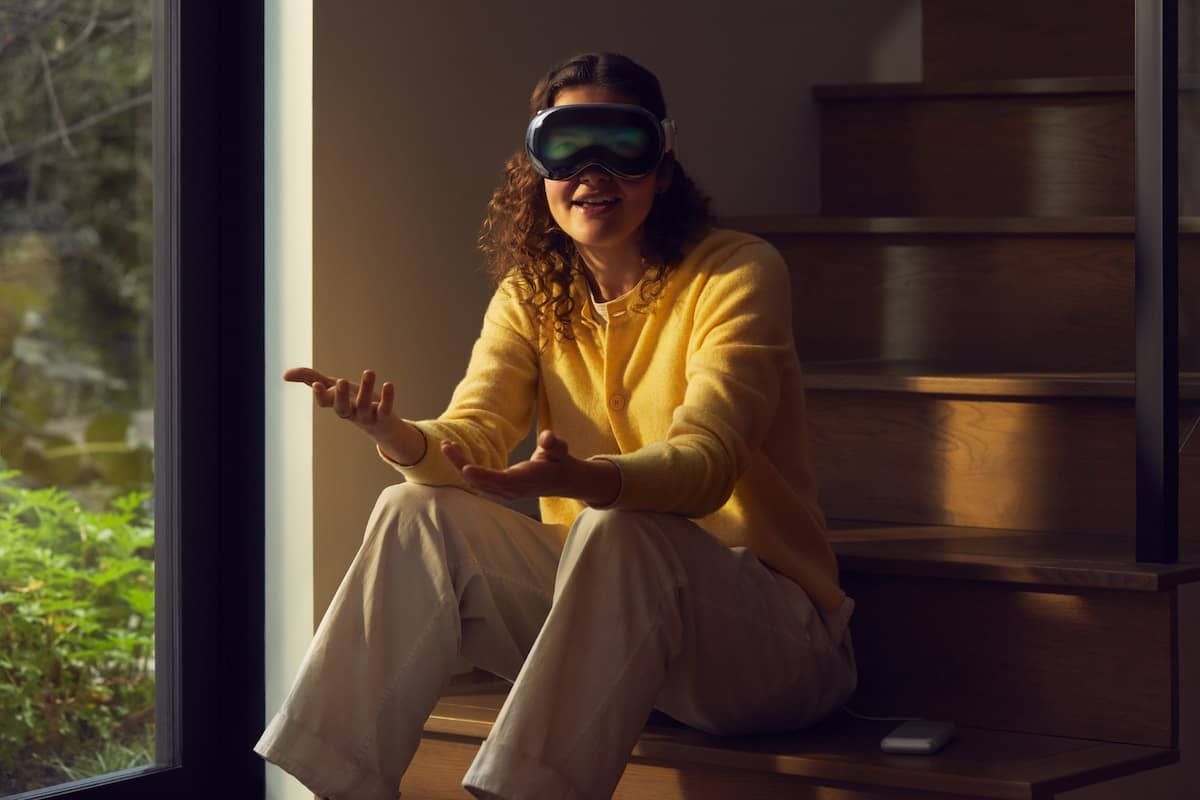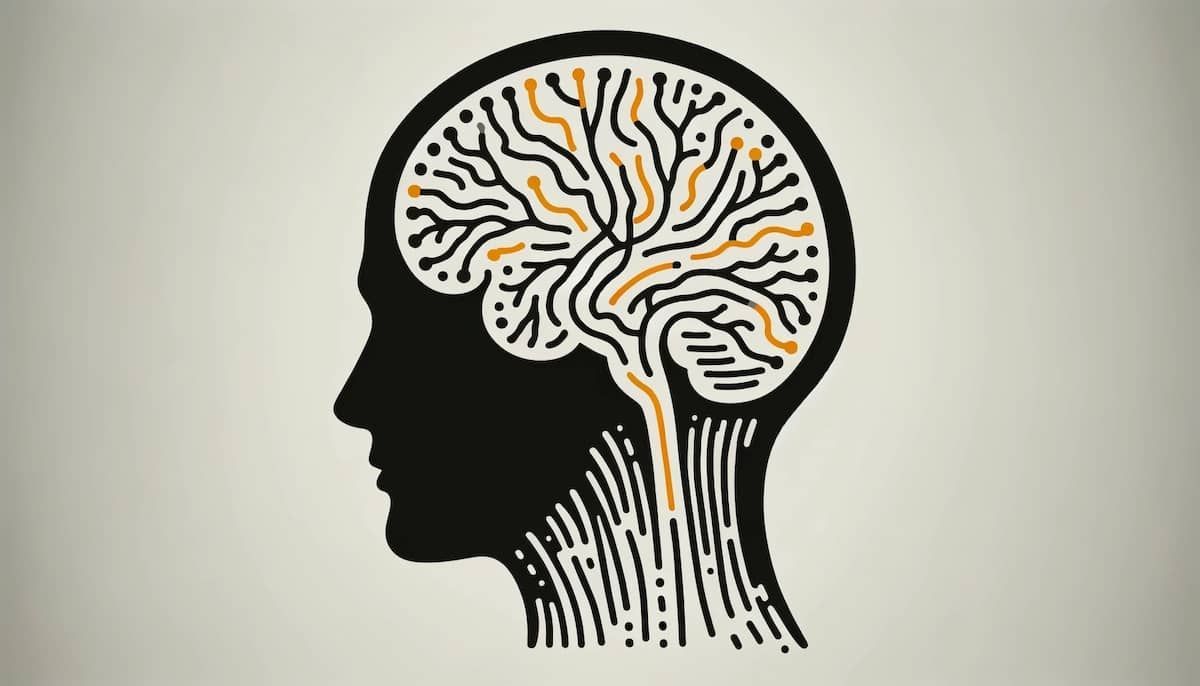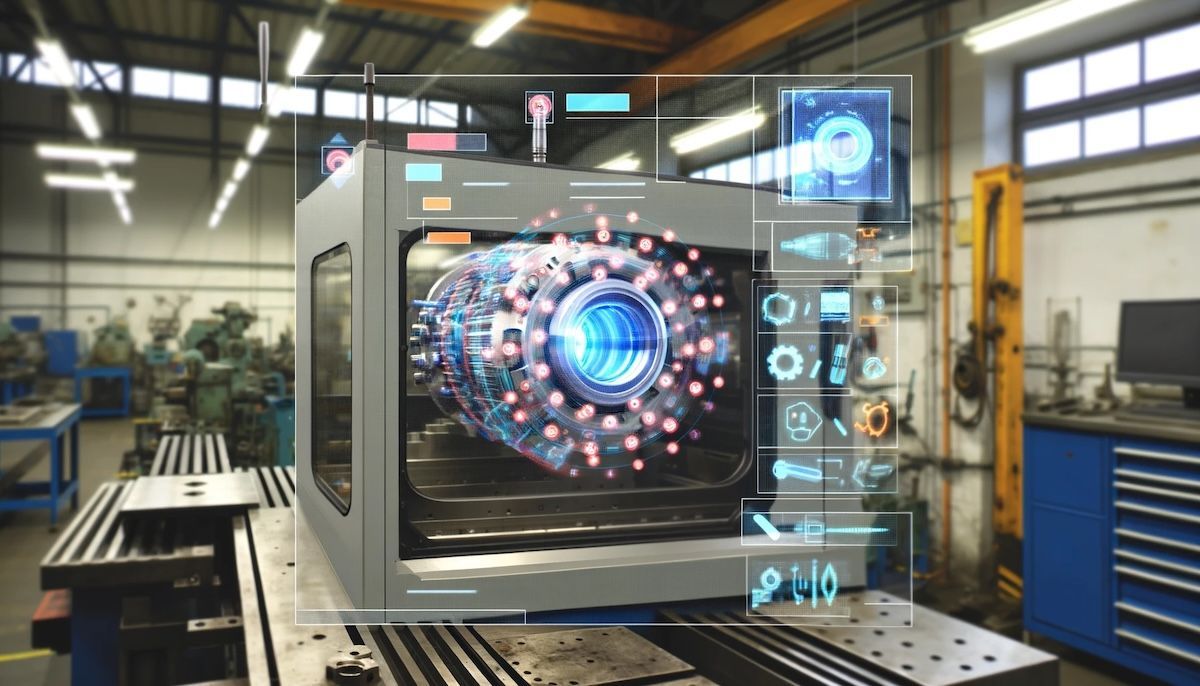
July 28, 2025
AR QuickLook in Product Marketing

Founder/CTO The Spatial Studio, Technology-Enthusiast
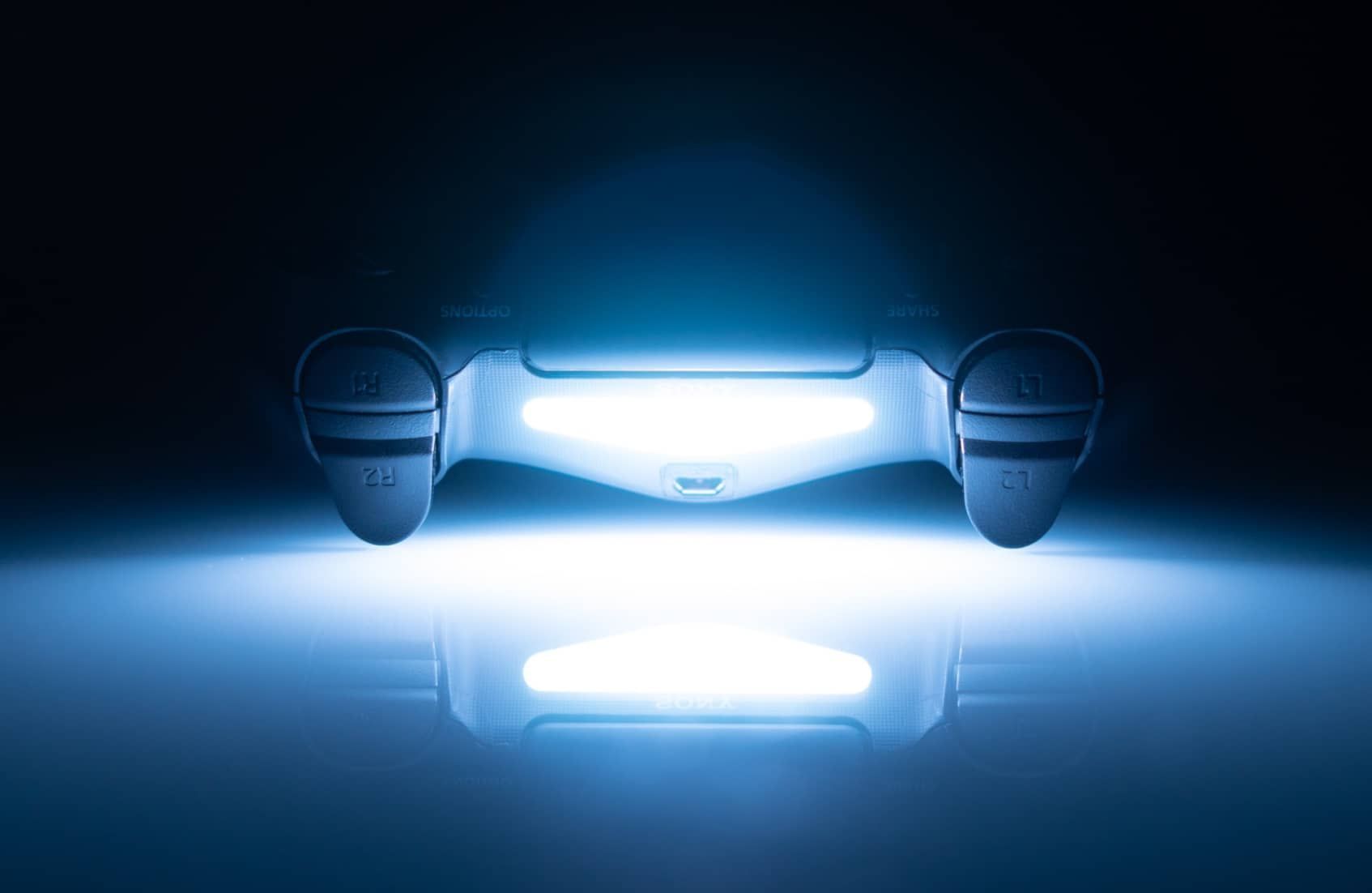
Apple's message is crystal clear: Augmented Reality (AR) is here and will play a major role in the future of the iPhone. Since the release of ARKit 2.0 and the announcement of Apple Vision Pro, the company has deeply integrated AR into the core of all of its operating systems.
Even applications like iMessage, Mail, Notes, News, Safari, and Files now support AR.
This is thanks to AR QuickLook. It is currently the easiest way to implement more complex AR in mobile applications. This article will show you what's possible with this technology in product marketing and why it's worth exploring.
What is AR QuickLook?
Apple AR Quick Look is a technology that allows iOS users to view and interact with augmented reality (AR) content directly in apps or on websites without the need for a separate AR application. It provides a seamless AR experience by leveraging the power of ARKit to display 3D models, animations, and other AR content in real-world environments.
QuickLook itself has long been available on MacOS devices. Selecting an image in the Finder and pressing the space bar opens a quick preview without actually "opening" the file.
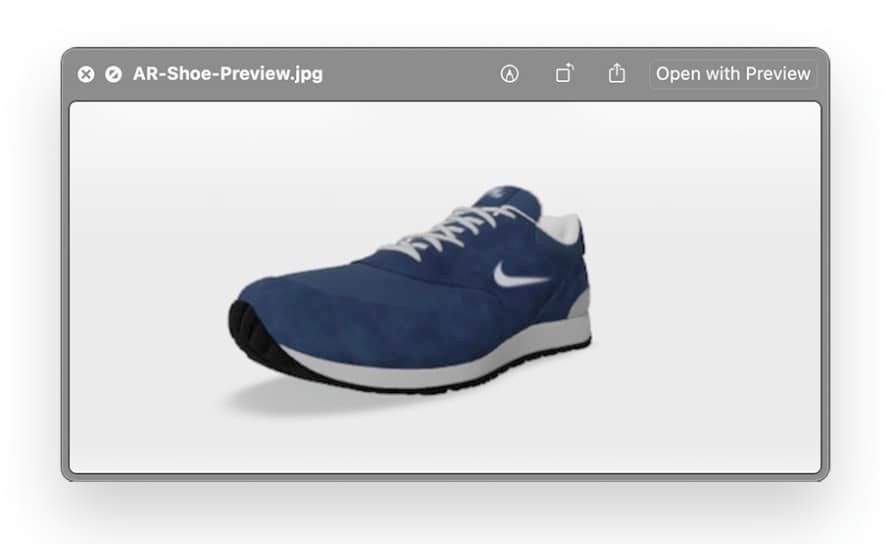
AR Preview
What's new? With the new AR feature, QuickLook now supports 3D formats such as .usdz and .reality.
AR QuickLook allows you to virtually project 3D models into a room. The model is placed so that it looks realistic in the room, taking into account perspective and scaling. The lighting is also adapted to the environment. Otherwise, the digital content would all look out of place and "artificial".
For example, if you want to buy a new sofa, you can try it out in your living room using QuickLook, which ensures realistic scaling, and see if it fits in.
Best of all, AR QuickLook is incredibly easy to set up. All you have to do is enter the path to the appropriate USDZ file. Apple's software does the rest.
Features of AR QuickLook
Of course, AR QuickLook is a complete black box. This means that you can only work within the framework set by Apple. But QuickLook offers a lot more features than you might think.
Anything is possible:
- Anchors: Anchors allow you to "stick" virtual content to real surfaces. Since iOS 13, you can "anchor" to horizontal surfaces (e.g. floor, ceiling, tables, chairs, etc.), vertical surfaces (e.g. walls), images (e.g. posters and photos), and faces.
- Occlusion: Occlusion ensures that virtual content can be overlapped by physical objects, depending on where the content is located relative to real space. This is only possible on certain devices.
- Force and collisions: Virtual content reacts (when intended) to physical laws, i.e. gravity, collisions, bouncing / jumping.
- Triggers and Behavior: Users can directly interact with the AR experience, triggering events, animations, sounds, and influencing objects.
- Real-time shadows: Virtual objects cast realistic shadows on physical objects in the real world in real time. The more powerful the device, the more realistic. Newer devices even use ray tracing.
- High dynamic range and color correction: AR QuickLook continuously adjusts the lighting and color of virtual objects to match the environment and conditions. This way, the virtual is embedded in the real world in the best possible way.
- Real-time effects: AR QuickLook also applies post-processing to the virtual content to make it even more realistic. Motion blur blurs fast movements, simulated focal length ensures that distant objects are out of focus, and light grain adjusts otherwise too perfect renderings to the slight quality loss of the camera feed.
- Physics-based rendering of clear-coat materials: Clear-Coat Materials allow for incredibly realistic materials that make virtual objects look deceptively similar to the real thing.
- Spatial audio: Embedded sound is not only played, but also reacts to movement and position in space or relative to the camera. If a virtual object emitting a sound is to the left of the viewer, the sound will come from the left. If the object moves to the right, the sound moves with it. For maximum immersion.
- Integration and customization: AR QuickLook can be easily integrated into web, iOS, macOS and tvOS applications.
- Apple Pay: Apple's own payment function is natively integrated into AR QuickLook. This means the user never has to leave the AR experience to purchase a product. Ideal for Marketing and Sales.
AR QuickLook can do a lot and do it incredibly well - flexibility, accessibility and high image quality all at the same time. But there are a few things to keep in mind.
Limitations of AR QuickLook
The many features that AR QuickLook offers are great, but not on all devices. On many older or less powerful devices, the feature set is significantly reduced. The full experience with all the bells and whistles is unfortunately only available on the very latest Apple devices.
Probably obvious, but it needs to be said: AR QuickLook is only available for the Apple universe. Devices that do not run an Apple operating system, such as Android or Windows, will not benefit from this technology. It's all Apple.
In addition, there is no code or scripting pipeline for developers to use to customize AR QuickLook for their project and better integrate it with their content. There are no webhooks, open events (such as application status), or the like. If you need a more intelligent AR application and want to work Apple-native, there is no way around developing an app. This is not the core idea of WebAR.
Experience QuickLook
It is easy to try! On this page, Apple has provided a number of exciting examples that demonstrate the various features of AR Quick Look. Click on one of the thumbnails with the small icon in the upper right corner to open the AR application (iPhone with iOS 12 or later only).
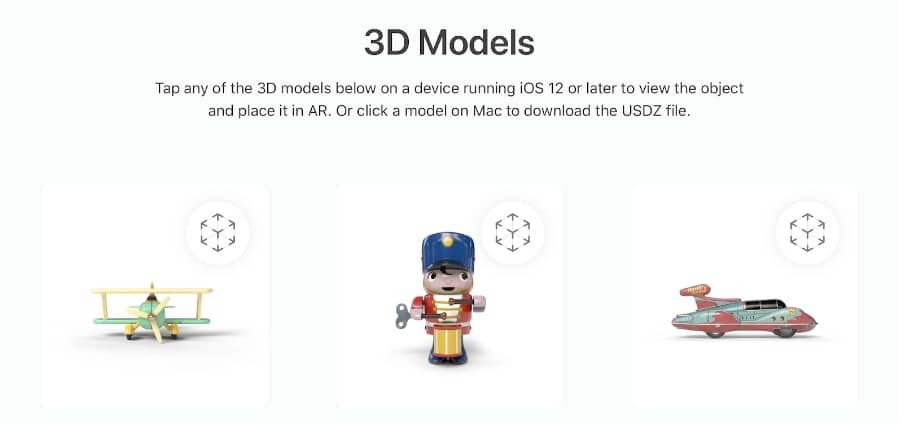
AR models
AR mode
If you click on an iPhone link pointing to a .usdz or .reality file, the AR QuickLook app will start in AR mode. This takes you to the AR application you want to show as quickly as possible.
QuickLook then searches for a suitable surface on which to position the digital content. Various animations provide intuitive instructions to help speed up the process. Once a suitable surface has been found, the object is placed automatically and correctly illuminated.
A few things are now possible:
- Positioning: Objects can be easily and intuitively positioned in the room by simply tapping, holding and dragging. Incidentally: AR QuickLook can also handle vertical surfaces.
- Scaling: Objects can be scaled using a pinch gesture, in the same way as zooming in on photos. Double-tapping the model resets the size to 100%.
- Rotate: Rotating is easy and intuitive by making a circular motion with two fingers on the screen. Double-tapping resets the rotation.
- Float: Drag an object upwards with two fingers to make it float above the tracked surface.
- Photos and videos: With the shutter button on the edge, you can take snapshots of the mixed reality scene with a simple tap. Hold it down to record a video until you release it.
- Share: The share button allows you to easily share the experience. For example, AirDrop to a nearby friend works great.
Clicking on the X closes the application and takes you back to the button you used to open the experience.
Object mode
In object mode, the 3D model can be viewed in isolation, free from distractions. However, features such as spatial audio still work in this mode.
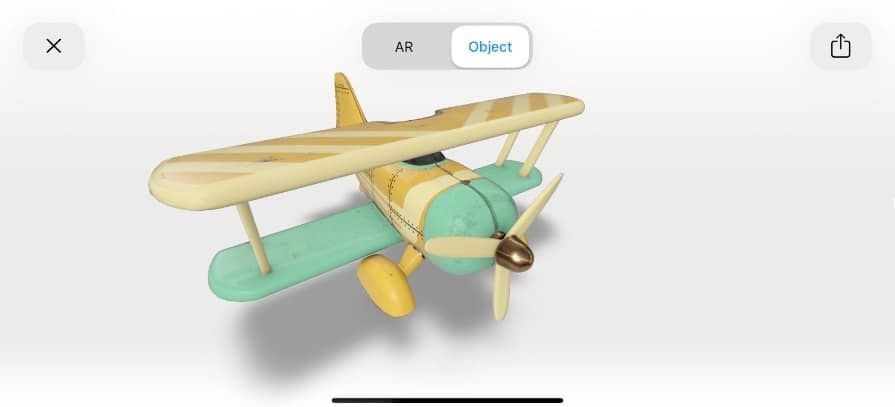
Object mode
Summary
AR is now an integral part of the Apple ecosystem, offering integrations for iOS, macOS and tvOS.
AR Quick Look offers a wide range of features and provides an exceptional augmented reality experience that is ready to use straight away. Users instinctively know what to do.
AR Quick Look uses .udsz and .reality files.
AR content can be used on the web. Simply embedding the files as a link is enough, iOS is smart enough to recognise the files and launch the experience.

Founder and CEO
Passion for New Technologies
As a creative engineer and consultant specializing in holistic digital transformation, I have spent over 15 years helping renowned companies use new and innovative technologies in creative and meaningful ways.
At "The Spatial Studio," my team and I combine engineering expertise, software development, and UX design to create entirely new three-dimensional possibilities for our clients.

